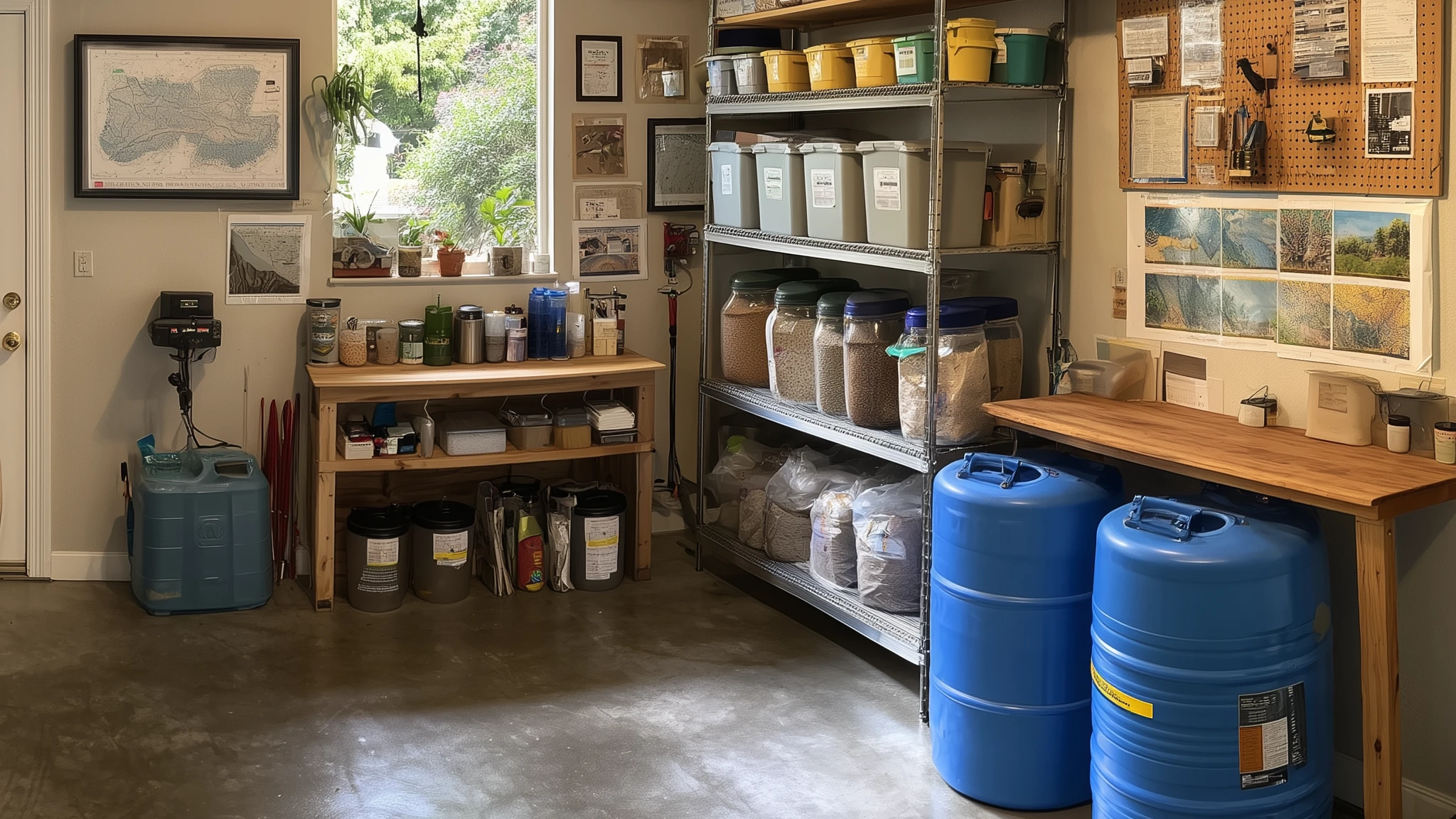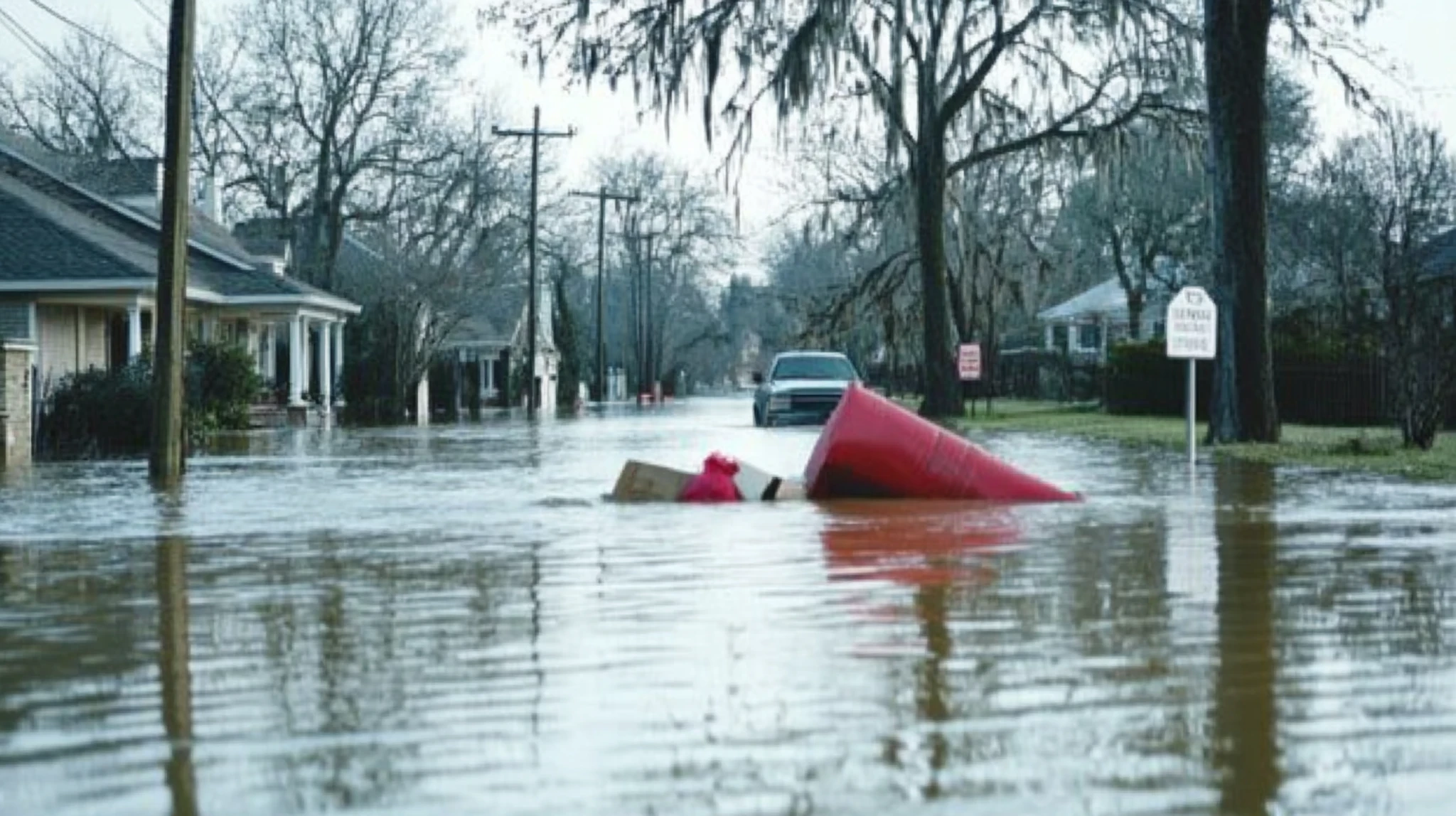Picture this: the local news breaks of a storm, a cyberattack, or a sudden blackout. Within hours, your supermarket turns into a frenzy—carts piled with soda and chips, shelves stripped bare, and people grabbing whatever they can. Most are panic-shopping. But smart preppers think differently. A last-minute grocery run isn’t about panic—it’s about strategy. The right choices can feed a family for weeks, even months, while everyone else runs out of food.
So what should you grab? And more importantly, how much do you actually need? Let’s walk through the essentials, with real numbers you can use to prepare for your family.
Water: Your First Priority
You can survive weeks without food, but only days without water. That’s why FEMA and the Red Cross recommend at least 1 gallon per person per day. Half is for drinking, the other half for basic sanitation.
For a family of four, that’s 120 gallons for one month. Serious preppers often double it to 2 gallons per person per day, which brings the total to 240 gallons per month. It sounds like a lot, but you can meet this need with a mix of bottled water, water storage containers, and filtration systems for replenishing your supply from natural sources.
Calories Count
On average, adults need around 2,000 calories per day. For a family of four, that’s 8,000 calories daily—or about 240,000 calories per month. Stockpiling is really about calories, not just cans. You want foods that are calorie-dense, nutritious, and long-lasting.
Staple Foods to Build Around
Grains and Carbs
Rice, oats, pasta, and flour form the backbone of survival calories. White rice alone can last 25+ years when stored properly. A good starting point is 50–60 pounds of grains per month for a family of four, which provides roughly 90,000 calories. Oats are excellent for breakfast, while flour or cornmeal lets you bake bread or fry cakes on an open fire.
Beans and Lentils
Dried beans are protein and fiber in one package, and they store for decades. Aim for 30–40 pounds per month for four people, which adds around 50,000 calories plus much-needed protein. Canned beans are also useful—they’re heavier, but ready to eat with no cooking required.
Canned Goods
Cans shine in disaster because they don’t require refrigeration and often come pre-cooked. Stock at least 60–80 cans per month across vegetables, fruits, meats, and soups. Canned fruit offers vitamin C and a morale boost, while canned tuna, chicken, or salmon bring protein variety.
Proteins That Last
Protein keeps muscles working when you’re chopping wood or hauling water. Peanut butter is a survival MVP: it’s calorie-dense, shelf-stable, and requires no cooking. Store 8–10 jars per month for a family of four. Add in 30–40 cans of fish or chicken for balance. Powdered eggs, if available, provide flexibility for cooking.
Fats and Oils
Fats are the most calorie-dense nutrient, yet often overlooked. Store 2–3 gallons of cooking oil, ghee, or shortening per month. That’s roughly 60,000 calories. Nut butters add another layer of fat and protein. Rotate oils regularly, since they can go rancid.
Flavor, Comfort, and Morale
Don’t underestimate the power of flavor. Salt is essential for both seasoning and preservation. Sugar and honey provide quick energy and boost morale, while spices turn bland rice and beans into meals you’ll actually eat. Store 10–15 pounds of sugar or honey, plus a selection of herbs and spices.
And yes, comfort foods matter. Coffee, tea, chocolate, or even some packaged snacks lift spirits during bleak days. Survival is as much mental as physical, and a warm drink can restore more than energy.
Shelf Life and Storage
Rice (white): Up to 30 years in mylar bags with oxygen absorbers.
Beans (dried): 10–20 years in sealed storage.
Canned goods: 2–5 years, often longer if stored in cool, dry conditions.
Oils: 1–2 years—rotate often.
Sugar, salt, and honey: Essentially indefinite if stored properly.
Use food-grade buckets, mylar bags, and oxygen absorbers for long-term staples. Keep a “working pantry” of canned goods and rotate regularly: eat what you store, store what you eat.
Building a Balanced Stockpile
Here’s what a one-month supply for a family of four might look like:
60 lbs rice and oats
35 lbs beans/lentils
70 canned goods (mixed vegetables, fruits, meats)
10 jars peanut butter
3 gallons cooking oil or ghee
12 lbs sugar or honey
10 lbs powdered milk
Coffee, tea, spices, salt for morale and flavor
Combined, that’s enough to cover basic calories, protein, fats, and micronutrients for four people across a month. Scale this up if you’re preparing for longer-term crises.
More Than Just Groceries
A smart grocery run isn’t just about filling your cart—it’s about creating a foundation of resilience. Food and water are survival’s bedrock, but the choices you make in those rushed moments before the shelves go bare can set your family apart from the panicked crowds.
So the next time you walk through a supermarket, don’t just see aisles of cans and bags. See calories, see shelf life, see comfort, and see survival. Because when disaster strikes, it won’t be luck that fills your pantry—it will be the decisions you made today.



